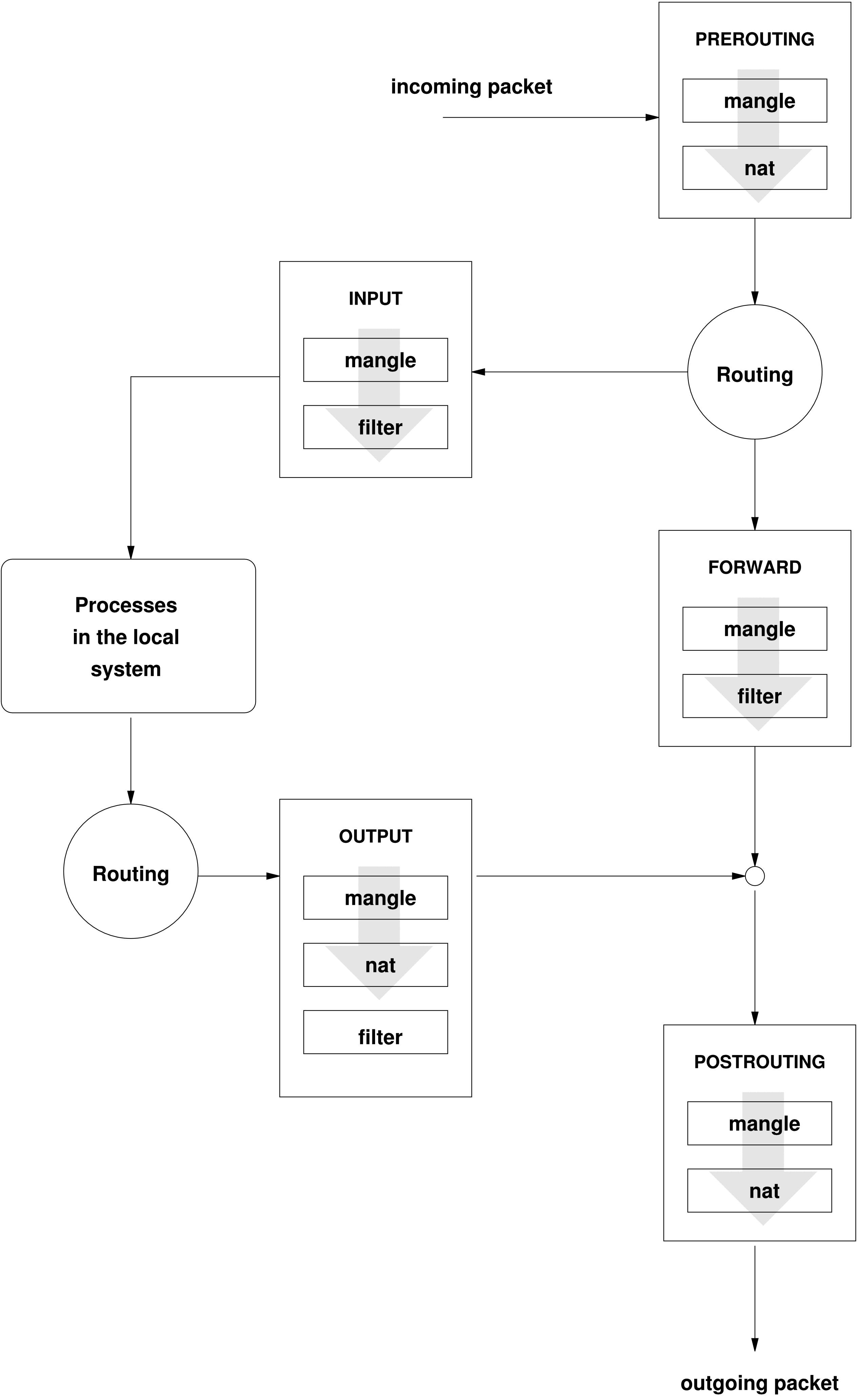35.1 Packet Filtering with iptables
The components netfilter and iptables are responsible for the filtering and manipulation of network packets as well as for network address translation (NAT). The filtering criteria and any actions associated with them are stored in chains, which must be matched one after another by individual network packets as they arrive. The chains to match are stored in tables. The iptables command allows you to alter these tables and rule sets.
The Linux kernel maintains three tables, each for a particular category of functions of the packet filter:
- filter
-
This table holds the bulk of the filter rules, because it implements the packet filtering mechanism in the stricter sense, which determines whether packets are let through (ACCEPT) or discarded (DROP), for example.
- nat
-
This table defines any changes to the source and target addresses of packets. Using these functions also allows you to implement masquerading, which is a special case of NAT used to link a private network with the Internet.
- mangle
-
The rules held in this table make it possible to manipulate values stored in IP headers (such as the type of service).
These tables contain several predefined chains to match packets:
- PREROUTING
-
This chain is applied to incoming packets.
- INPUT
-
This chain is applied to packets destined for the system's internal processes.
- FORWARD
-
This chain is applied to packets that are only routed through the system.
- OUTPUT
-
This chain is applied to packets originating from the system itself.
- POSTROUTING
-
This chain is applied to all outgoing packets.
Figure 35-1 illustrates the paths along which a network packet may travel on a given system. For the sake of simplicity, the figure lists tables as parts of chains, but in reality these chains are held within the tables themselves.
In the simplest of all possible cases, an incoming packet destined for the system itself arrives at the eth0 interface. The packet is first referred to the PREROUTING chain of the mangle table then to the PREROUTING chain of the nat table. The following step, concerning the routing of the packet, determines that the actual target of the packet is a process of the system itself. After passing the INPUT chains of the mangle and the filter table, the packet finally reaches its target, provided that the rules of the filter table are actually matched.
Figure 35-1 iptables: A Packet's Possible Paths
